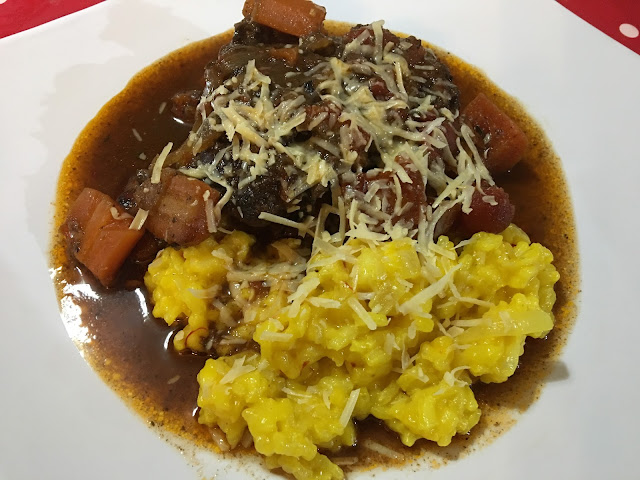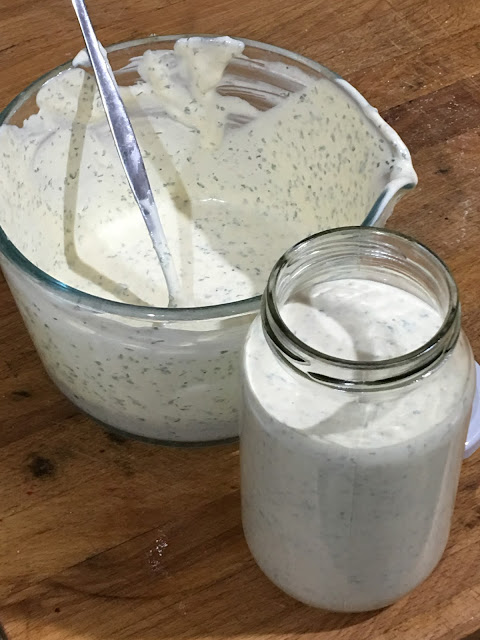And now for something completely different - LOL!!
As always I am constantly on the hunt for a "different" recipe, dish or really anything to cook. It's somewhat looked upon as an obsession, an illness perhaps but to be perfectly honest I don't care. I enjoy what I do, it makes me happy and I take great pride in introducing my family to different foods, flavours, textures experimenting to find their likes and dislikes.
I have mentioned before that this was the way I was raised by my parents - I was taught never to fear food but to taste and decided if I liked it or not. Nothing was left far from the imagination - we always had food made from little or many ingredients and from many countries or regions. My parents enjoyed their relationship with food and this was passed on to me - I believe everyone should have a good understanding of foods especially those void of all the added chemicals, additives and preservatives evident in many foods of today's world.
My kids have embraced the love of food - although there have been many times over the years that there have been pleas of "can we please have normal food for a change" and many nights where beans, eggs and chips have been served at our table. However saying this I absolutely adore being at a restaurant and listening to my kids order their meals. To my delight they often try something other than Parma and Chips. I remember my daughter as an 8 year old sitting in the local Chinese restaurant boldly asking for Chicken and Sweet Corn Soup followed by Peking Duck. The waitress was amazed and yelled to the chef telling him of her order. I still chuckle when I think of that moment.
We have a new member in our household, our son's girlfriend. She has been with us for several months now and I am impressed with her willingness to embrace our lifestyle and our food. To date she has tried everything put before her and yes there are things that she wasn't a fan of but has had the openness and honestly to speak her thoughts. I am very proud of her - she definitely belongs in our family.
Saying this, beef cheeks were on the menu last night and of course, I would not have done them justice if I had just slow cooked them in red wine. Research completed and several recipes morphed together plus a few little twists of my own saw this creation - Beef Cheeks with Thyme Chilli and Ginger Beer served with Saffron Risotto. This recipe is loosely based on a recipe that appeared in the August/September 2008 issue of Gourmet Traveller WINE but as usual I had to change ingredients and put the House Of Murray twist on things.
Beef cheeks must be slow cooked - there is no other way to cook them so don't even consider it. Low and slow either in the oven or a slow cooker. A quick fry is NOT an option of cooking these meat pieces - they will be tough.
A word of warning also - beef cheeks are a rick meat to start with and most recipes are served with a rich red wine jus or sauce in which they are cooked. I wanted something different as much as love a good full bodied red wine sauce there was the need to experiment. So I substituted half the red wine with white wine and also added a bottle of sugar free ginger beer. The result was fantastic - although still a little rich which I did expect it wasn't as heavy as it would normally be. Also added the subtly of fresh thyme and a little heat from chilli flakes.
Overall, a truly hearty dish which served also side a Saffron Risotto was filling and well received at the table.
A word of warning also - beef cheeks are a rick meat to start with and most recipes are served with a rich red wine jus or sauce in which they are cooked. I wanted something different as much as love a good full bodied red wine sauce there was the need to experiment. So I substituted half the red wine with white wine and also added a bottle of sugar free ginger beer. The result was fantastic - although still a little rich which I did expect it wasn't as heavy as it would normally be. Also added the subtly of fresh thyme and a little heat from chilli flakes.
Overall, a truly hearty dish which served also side a Saffron Risotto was filling and well received at the table.
Beef Cheeks with Thyme, Chilli and Ginger Beer
Serves: 4 - 6
1 litre beef stock
4 - 6 beef cheeks (approx. 250 grams each), trimmed
salt
freshly ground black pepper
3 large carrot, cut into large chunks
1 onion, diced
3 garlic cloves, roughly chopped
1 bunch fresh thyme
2 cups dry red wine
2 cups dry white wine
750 ml bottle sugar free ginger beer
2 teaspoons dried chilli flakes
2 tablespoons extra-virgin olive oil
600 ml chicken stock
80 ml extra-virgin olive oil
200 grams risotto rice
1 brown onion, finely diced
2 garlic cloves, finely chopped
2 teaspoons saffron threads
150 ml dry white wine
80 grams butter
Place beef stock in a saucepan over medium heat and cook until the liquid reduces by half, or for about 30 minutes.
Season beef cheeks with sea salt and freshly ground black pepper.
In a large jug combine red wine, white wine, ginger beer and chilli.
Place beef cheeks in a large bowl and pour over wine mixture. Cover with cling film and marinate in the refrigerator overnight.
Remove from refrigerator and separate beef cheeks and marinade.
Heat olive oil in a large frying pan over medium heat and cook beef cheeks for about 5 minutes or until browned. Transfer to a plate.
Add vegetables to the pan and sauté for 5-7 minutes until softened. Transfer to a bowl.
Place stock and marinating liquid in a saucepan over medium heat, bring to the boil then remove from heat.
Place beef cheeks and vegetables in a roasting dish and cover with stock mixture. Cover tightly with foil and cook in a preheated oven at 150C for 3- 4 hours or until tender.
Meanwhile heat the chicken stock in a saucepan over low heat.
Heat oil in a large saucepan over medium heat, add rice and cook, stirring continuously, for 2 minutes. Add shallots, garlic and saffron and cook for another 2 minutes.
Add white wine and shake pot occasionally until wine begins to reduce or for about 3-5 minutes. Add stock a ladle at a time until stock just covers the rice, making sure it continues to just cover the rice. After rice has been cooking for 10 minutes, stir for 2-3 minutes.
Check rice is al dente, remove from heat, stir in butter and season to taste with sea salt and freshly ground black pepper.
Serve risotto immediately with beef cheeks, vegetables and sauce.
(Click here for a printable version of this recipe)
















